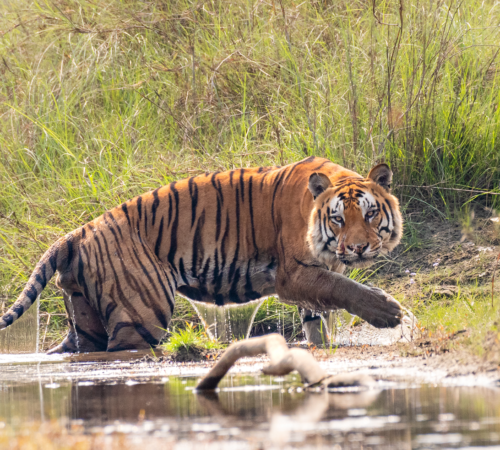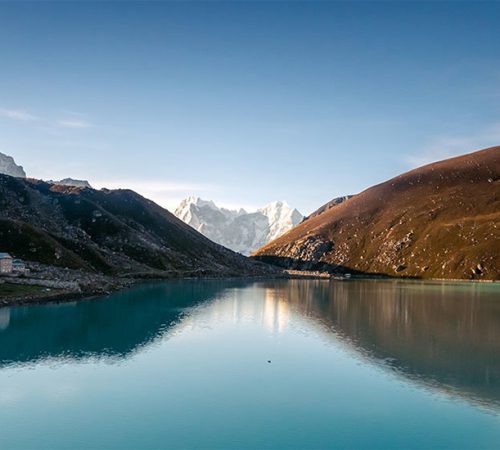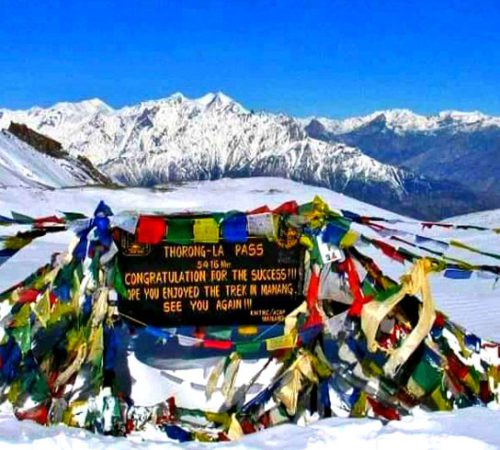Trip Facts
-
Duration
14 Days
-
Trip Start and End
Kathmandu Kathmandu
-
Difficulty Level
Moderate
-
Trip Area
Rara National Park
-
Maximum Altitude
3055m/10,022.97ft - Chere Chaur
-
Best Season
September-November and March-May.
-
Meals
Breakfast, Lunch & Dinner
-
Accommodation
Hotels, Lodges & Tea House
-
Transportation
Flight, Car, Jeep
Highlights
- Rara Lake
- Scenic Landscapes
- Wildlife Encounters
- Cultural Immersion
- Danphe Lagna Pass
- Off-the-Beaten-Path Experience
- Boating on Rara Lake
- Photography Opportunities
- Sense of Accomplishment
Trip Overview
The Rara Trek is a captivating journey through the remote and unspoiled regions of western Nepal, leading trekkers to the serene Rara Lake, the largest lake in Nepal. Nestled in the Rara National Park, this trek offers a blend of natural beauty, cultural richness, and an off-the-beaten-path experience, making it a perfect choice for those seeking solitude and immersion in nature. The trek usually begins from Jumla, a town accessible by a short flight from Nepalgunj, and spans approximately 10 to 14 days, depending on the specific route and pace of the trek.
One of the highlights of the Rara Trek is the journey through the diverse landscapes that range from lush forests and alpine meadows to rugged mountains. As trekkers ascend, they pass through forests of pine, oak, and rhododendron, home to a variety of wildlife including Himalayan black bears, red pandas, and numerous bird species. The changing scenery, with snow-capped peaks in the background and the tranquil Rara Lake as the destination, provides a constantly evolving backdrop that captivates and rejuvenates the trekkers.
Cultural encounters are another significant aspect of the Rara Trek. The region is inhabited by various ethnic communities, including the Thakuri and Raji people, who are known for their unique traditions and lifestyles. Trekkers have the opportunity to visit remote villages, interact with the locals, and gain insights into their daily lives and cultural practices. These interactions offer a deepened understanding of Nepal's cultural diversity and enhance the overall trekking experience.
The climax of the trek is reaching Rara Lake, situated at an altitude of 2,990 meters. The lake, surrounded by dense forests and snow-covered peaks, is often described as a shimmering blue jewel amidst the mountains. Its crystal-clear waters reflect the stunning scenery, creating a tranquil and mesmerizing atmosphere. Trekkers can spend time exploring the lake's perimeter, enjoying the peaceful environment, and even engaging in activities like boating or fishing.
Despite its remote location, the Rara Trek is gaining popularity among adventurous trekkers looking for a less commercialized experience compared to the more famous trekking routes in Nepal. The relative isolation of the region means that the infrastructure is less developed, and trekkers often rely on camping or basic teahouse accommodations. This adds an element of adventure and self-sufficiency to the trek, appealing to those who enjoy rugged and authentic travel experiences.
In summary, the Rara Trek offers a unique blend of natural beauty, cultural richness, and adventure. From the diverse landscapes and wildlife to the cultural interactions and the stunning Rara Lake, the trek provides an unforgettable journey into one of Nepal's most pristine and remote areas. It's a trek that not only challenges the body but also nourishes the soul, making it a cherished memory for those who undertake it.
Detail Itinerary
+ Show More• Activities: Arrival, transfer to hotel, rest and prepare for the trek.
• Overnight: Hotel in Kathmandu.
Cost Includes
- Airport Transfers
- Accommodation
- Meals
- Professional Guide
- Porters
- Permits
- Transportation
- First Aid
Cost Excludes
- International Flights
- Travel Insurance
- Visa Fees
- Personal Expenses
- Tipping
- Alcoholic Beverages
- Extra Nights
- Equipment Rental
- Additional Activities
- Unforeseen Cost
Guidelines / Information
Preparation and Fitness
1. Physical Fitness: Ensure you are in good physical condition. Engage in cardiovascular exercises, strength training, and hiking practice to prepare for the trek.
2. Medical Check-Up: Have a thorough medical check-up before the trek. Ensure you have necessary medications and first aid supplies.
3.Travel Insurance: Obtain comprehensive travel insurance that covers high-altitude trekking, medical emergencies, and evacuation.
Packing Essentials
1. Clothing: Pack appropriate clothing for varying weather conditions including thermal layers, waterproof jackets, trekking pants, gloves, and hats.
2. Footwear: Bring sturdy, comfortable trekking boots with good ankle support, and break them in before the trek.
3. Gear: Carry a quality backpack, sleeping bag (if camping), trekking poles, and a headlamp with extra batteries.
4. Personal Items: Include toiletries, a personal first aid kit, water purification tablets, and high-energy snacks.
Permits and Regulations
1. Permits: Secure the necessary permits, including the Rara National Park Entry Permit and TIMS card.
2. Local Regulations: Follow all rules and guidelines set by the Rara National Park and local authorities.
Environmental Responsibility
1. Leave No Trace: Practice responsible trekking by not littering, respecting wildlife, and leaving natural areas undisturbed.
2. Waste Management: Carry out all non-biodegradable waste and dispose of it properly in designated areas.
Cultural Sensitivity
1. Respect Local Customs: Be respectful of local customs, traditions, and religious practices. Dress modestly and ask for permission before taking photographs of people.
2. Support Local Communities: Purchase goods and services from local vendors to support the local economy.
Health and Safety
1. Altitude Awareness: Acclimatize properly to avoid altitude sickness. Ascend gradually and stay hydrated. Be aware of symptoms of altitude sickness and seek medical help if needed.
2. Stay Hydrated and Nourished: Drink plenty of water and eat nutritious meals to maintain energy levels.
3. Follow Guide’s Instructions: Always listen to and follow the advice and instructions of your guide.
Trekking Etiquette
1. Pace Yourself: Trek at a comfortable pace that suits your fitness level and allows you to enjoy the journey.
2. Group Safety: Stay with your group and avoid trekking alone, especially in remote areas.
3. Communication: Keep in touch with your trekking group and guide. Inform them immediately if you feel unwell or encounter any issues.
Emergency Preparedness
1. Emergency Plan: Familiarize yourself with the emergency plan and evacuation procedures in case of severe weather or health emergencies.
FAQs
The Rara Lake Trek is a trekking route in the remote northwestern region of Nepal, leading to Rara Lake, the largest lake in Nepal. The trek offers stunning views of the lake, surrounding hills, and the distant peaks of the Himalayas.
Rara Lake is located in the Mugu District within Rara National Park, in the Karnali Zone of northwestern Nepal.
The trek typically takes about 10 to 15 days, depending on the starting point and the specific itinerary chosen.
The trek is considered moderate in difficulty. It involves some steep ascents and descents but is generally accessible to trekkers with a reasonable level of fitness.
The best time to visit Rara Lake is during the spring (March to May) and autumn (September to November) seasons. During these times, the weather is generally clear, and the temperatures are moderate.
Trekkers need a Rara National Park entry permit and a Trekkers’ Information Management System (TIMS) card. Both can be obtained in Kathmandu or Nepalgunj.
Accommodation is typically in teahouses or homestays, offering basic facilities. It is advisable to bring a sleeping bag, as the bedding provided may not be sufficient in colder months.
The teahouses and lodges along the trail offer basic meals, including Nepali dishes like dal bhat (lentil soup with rice) as well as some international foods such as pasta, noodles, and potatoes.
The main health risks are altitude sickness, dehydration, and common trekking injuries like blisters and sprains. It’s important to acclimatize properly and stay hydrated.
It’s important to have travel insurance that covers trekking in remote areas and emergency evacuation. In case of an emergency, your guide will assist you in coordinating evacuation and medical help.
Essential items include a good quality trekking backpack, sturdy hiking boots, warm clothing (layers), a sleeping bag, a first aid kit, water purification tablets, and snacks. Don’t forget important documents like your permits and insurance.
Charging facilities are limited and often require a fee. It’s a good idea to bring a portable charger or spare batteries.
Mobile network coverage is intermittent and unreliable in many parts of the trek. It’s best to inform family and friends of limited communication options beforehand.
Internet access is scarce and slow where available. It’s best to enjoy the trek and disconnect from the digital world as much as possible.
Respect local customs and traditions. Dress modestly, ask for permission before taking photos of people, and be considerate of local practices and beliefs.
Follow the principles of Leave No Trace: pack out all trash, use designated toilets, stay on marked trails, and avoid disturbing wildlife.










